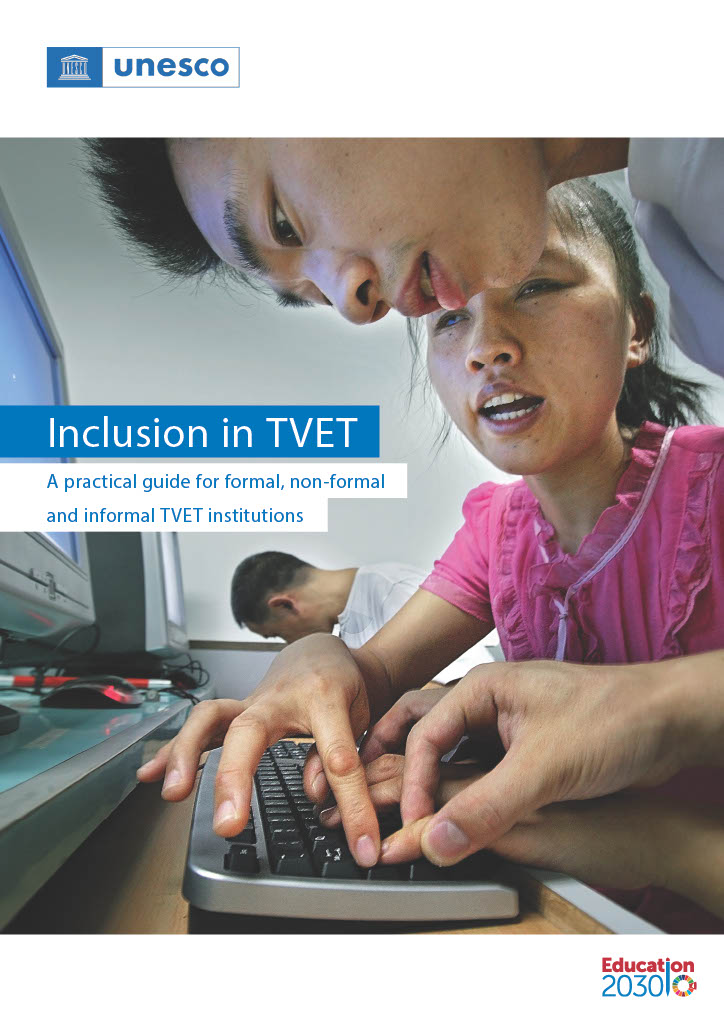Inclusion in TVET: a practical guide for formal, non-formal and informal TVET institutions

As economies evolve and societies grow more diverse, inclusive TVET is essential to equip all learners – regardless of ability, background or circumstance – with the skills they need for meaningful employment and participation in society. By integrating formal, informal and non-formal learning, TVET helps bridge educational gaps. This guide provides actionable strategies for building inclusive TVET systems. It promotes collaboration among NGOs, private sector actors and education providers to ensure no learner is left behind. This hands-on guide shows how to move beyond identifying challenges to creating real impact. It offers practical tools and a five-step imple-mentation framework, including the 4A tool (Availability, Accessibility, Acceptability, Adaptability). It proposes the use of pilot projects as a start for holistic institutional transformation on inclusion.
Year:
Organisation:
UNESCO; UNESCO International Centre for Technical and Vocational Education and Training
Marginalized & Vulnerable group:
Socially & Economically excluded groups
Topic:
Curriculum, Gender inequalities, Inclusive Pedagogy & Practices, Educational Staff Professional Development
Level of Education:
Technical & Vocational Education, Lifelong learning, Non-formal Education
Type of Resources:
Guidelines and Tools
Country/Region:
All, Africa, Arab States, Asia & the Pacific, Europe & North America, Latin America & the Caribbean
Language of Publication:
English